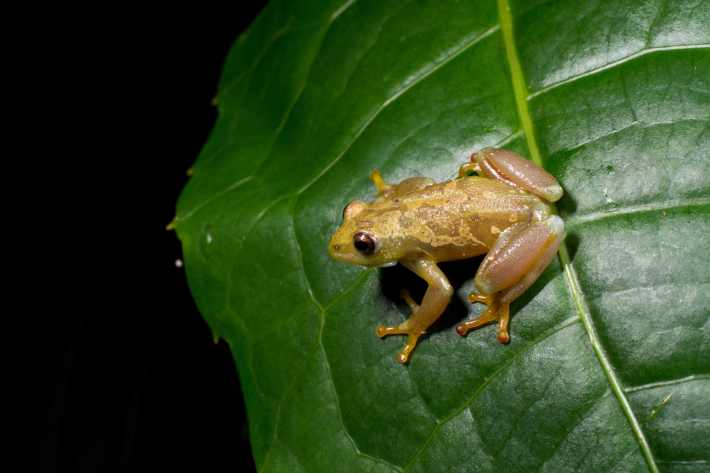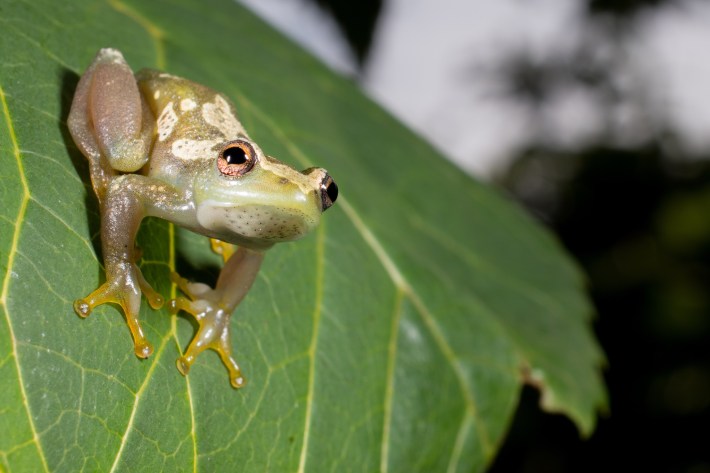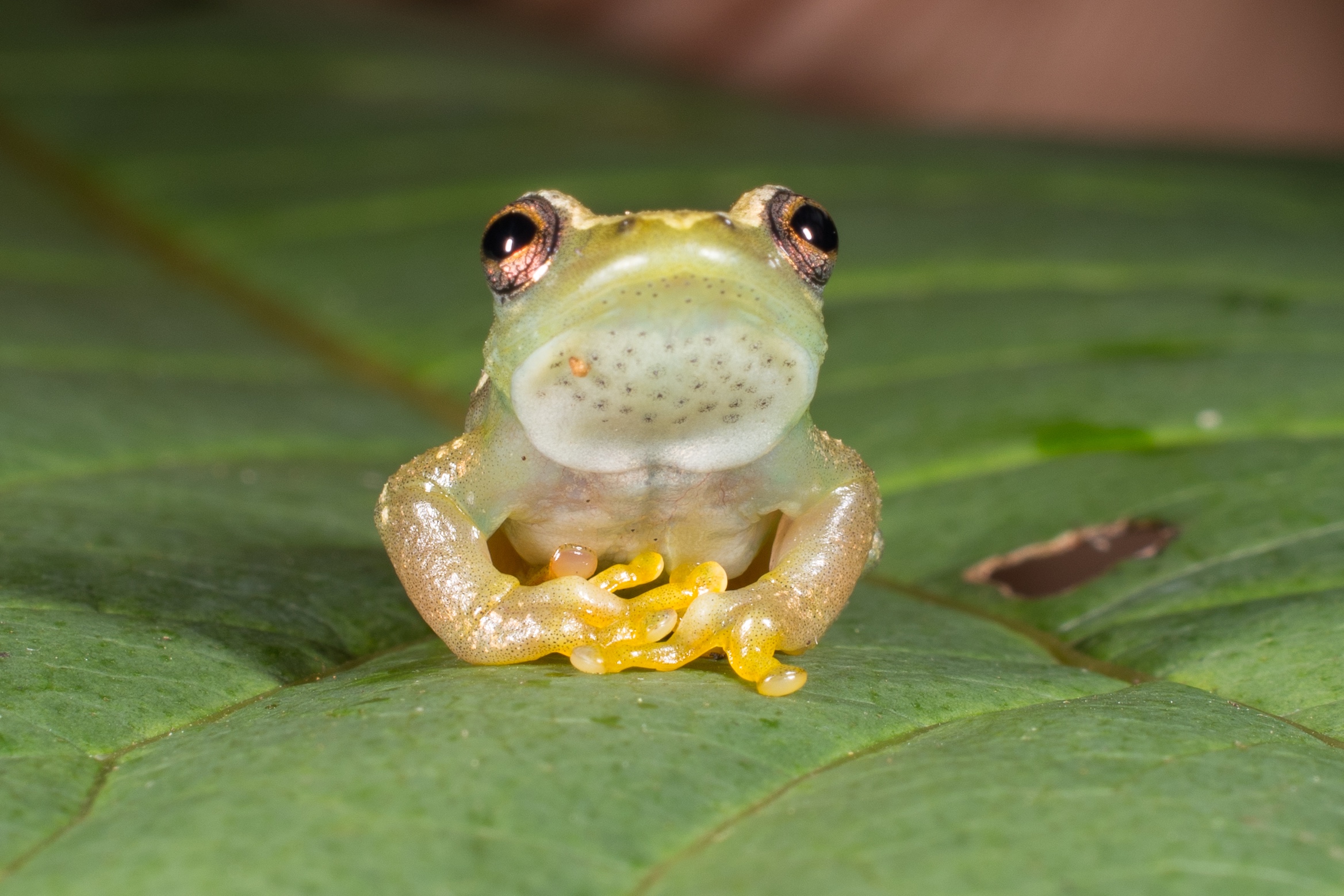In February of 2019, a group of scientists set foot in Tanzania's Ukaguru Mountains in search of a beautiful metallic toad. The toad's beauty not just physical, with a lichen-like pattern on their back, but also etymological; its name, Churamiti maridadi, means beautiful tree frog in Swahili. The species was described years ago by the mammalogist Bill Stanley from just two individuals, which were collected from a forest fragment in those same mountains. Now, the toad was feared extinct. "It hasn't really been seen in quite a while," said Lucinda Lawson, a conservation biologist at the University of Cincinnati. "But you never know what's going on."
Like trends, toads can be seasonal—around for the rainy season and not in others, for example. Lawson and colleagues had received a grant to to survey the forest fragment in the hopes of spying the beautiful toad, but knew their chances of seeing the species was slim. "We have a number of species that haven’t been recorded for decades despite repeated surveys," John Lyakurwa, a graduate student and lecturer at the University of Dar es Salaam, wrote in an email. These species include the beautiful metallic toad and Paola's forest toad, a spiny brown amphibian not seen since 2007.
As the researchers entered the edge of the forest, their car had a mechanical problem, marooning them at a camping site and preventing the team from venturing deeper into the known territory of the beautiful toad. So they searched the trees and ground for frogs, which can sit several yards up in a tree or nestle unseen in leaf litter. Suddenly, "this little guy popped out," Lawson said, adding that she recognized it as a spiny-throated reed frog in the genus Hyperolius. But while the known spiny-throated reed frogs were all silvery greens and browns, this frog had a distinct golden sheen.
After the researchers analyzed the golden frog's morphology and genetics, they confirmed it was new to science. Earlier this month, they described the new species, Hyperolius ukaguruensis in a paper in the journal Plos One.

The new frog was one of the most common species around the streams and ponds off the road, and were caught by hand sitting on plants a few feet above the water. But it was a silent frogs' evening, as no frogs were calling to one another. The species is voiceless—a quality that is extremely rare in the famously noisy creatures, and one that could seem to make it impossible for them to find other frogs of the same species.
Hyperolius may have up to 200 species, Lawson estimates, but a small evolutionary branch within the genus has evolved to be voiceless. The eight species of voiceless frogs within the genus live in relatively small areas, and exhibit parental care, where females guard and squirt water over their egg clutches, Lyakurwa said. And these species have all evolved little spines on their throat, which the authors believe to be an adaptation that helps the frogs interact with their environment. "They wouldn't show up for no reason," Lawson said. The scientists speculate the frogs may use these spines like braille to suss out members their own species. Lawson also hypothesized the spines might help the frogs release pheromones to communicate with each other.

When the eight species of spiny-throated reed frogs lost their voices, they were clearly still able to persist without them. But this voicelessness poses a new threat amid the biodiversity crisis facing Tanzania. "Being voiceless is considered a limiting factor for the animals to occupy new areas and do not make it easy for scientists to find them in the field as we normally follow vocalizing individuals while in the forest," Lyakurwa said. Tanzanian forests lose more than 1,500 square miles each year to anthropogenic activities, Lyakurwa said. And the smaller a species' range is, the easier it is to be wiped by deforestation. The new frog's closest evolutionary relative, a species named H. ruvuensis, was described from a single coastal forest in Tanzania and hasn't been seen since 2001.
The patch of forest where the new species of spiny-throated reed frog lives is a true fragment—able to be crossed in just a few hours of hiking. This makes the species especially vulnerable to extinction, the authors write. Still, Lyakurwa says he finds it exciting that a new species could be discovered in a space that has been explored several times by researchers. He estimates scientists have only described about 50 percent of the amphibian and reptile species in the Ukaguru Mountains. "We might be facing undetected extinction already," he added. Although the beautiful toad remains missing, there are many more Tanzanian toads and frogs with great personalities waiting to be discovered, named, and protected before it is too late.







